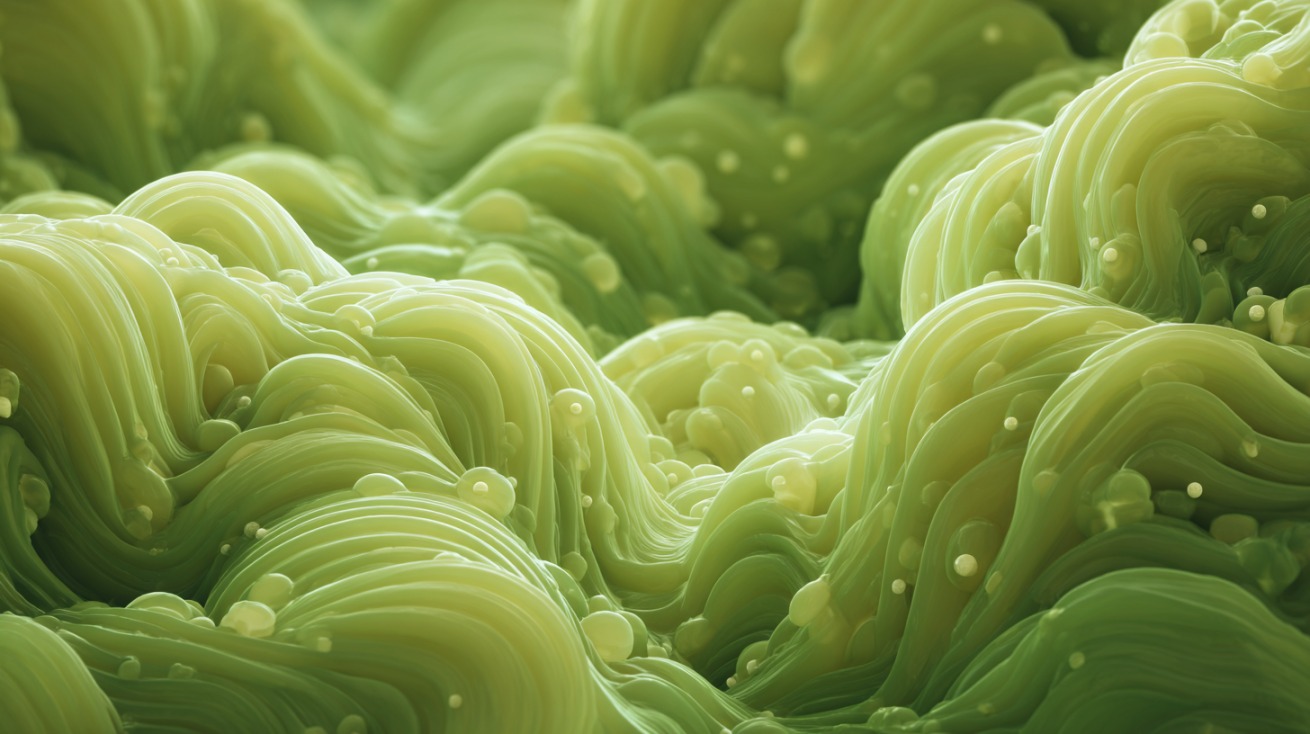Certain words can instantly make people cringe, laugh uncomfortably, or feel an odd sense of disgust.
Linguists and psychologists have long debated why some sounds or associations trigger such strong emotional reactions.
Some theories point to phonetic unpleasantness, while others emphasize the power of mental imagery or social taboo. Word aversion influences how people communicate, joke, and react to everyday conversations.
It reveals that even simple sounds can carry a surprising emotional weight, shaping humor, disgust, and culture all at once.
| Word | Why It’s Uncomfortable | Source | Context | Common Reaction |
|---|---|---|---|---|
| Moist | Associated with sweat, dampness, or intimacy; heavy, sticky sound. | Association and sound | Baking, humidity, physical descriptions | Laughter, disgust, shivering discomfort |
| Mucus | Reminds people of illness, slime, and bodily fluids; harsh ending sound. | Association | Health or medical discussions | Facial grimace, physical recoil |
| Pustule | Graphic, clinical, and linked to infection or disease; swollen sound. | Sound and visual association | Dermatology, pathology, horror writing | Cringe or sickness-related imagery |
| Panties | Infantilizing and overly sexual; socially awkward to say aloud. | Cultural and sexual association | Fashion, conversation, media dialogue | Unease or embarrassment |
| Chunky | Suggests unpleasant textures or insensitive body descriptions. | Texture and connotation | Food talk, informal conversation | Mild disgust or awkward laughter |
| Maggots | Evokes decay and death; sound mimics crawling movement. | Association with death and decay | Forensics, pest control, horror | Intense disgust or revulsion |
| Vomit | Blunt and graphic; instantly conjures unpleasant imagery. | Visual and physical association | Medical or casual slang | Nausea or visible discomfort |
| Armpit | Linked to sweat, odor, and awkwardness; used as a negative metaphor. | Smell and bodily imagery | Hygiene, anatomy, humor | Laughter mixed with mild disgust |
| Slurp | Onomatopoeic; imitates noisy eating sounds that irritate listeners. | Sound and sensory association | Dining etiquette, eating descriptions | Irritation or imagined disgust |
| Curds | Associated with lumps, coagulation, and spoiled food textures. | Texture association | Food preparation, recipes | Disgust at imagined texture |
1. Moist

A word that consistently appears at the top of “most hated” lists, often met with an immediate grimace or laugh of discomfort. Its negative reputation stems from both sound and association.
The combination of the soft “m” and drawn-out “oi” produces a heavy, almost sticky resonance that feels cloying to pronounce. Many people link it to physical sensations like sweat, damp skin, or steamy rooms, imagery that borders on too intimate for casual conversation.
Even in innocent contexts, such as describing a “moist cake,” the reaction can range from suppressed laughter to visible unease. Linguistic studies suggest that the discomfort may come from a blend of phonetic density and the mental imagery tied to bodily conditions.
The word has even inspired memes and social media challenges, where people deliberately say it to provoke disgusted reactions.
- Discomfort Source: Association and sound
- Typical Context: Baking, humidity, physical descriptions
- Common Reaction: Laughter, disgust, or shivering discomfort
2. Mucus

A word that immediately brings an unpleasant image to mind, associated with sickness, colds, and the body’s least glamorous functions.
The soft “mew” at the start lulls the listener briefly before being cut off by the hard, abrupt “kus,” creating a jarring effect that mirrors the texture it describes. It’s often used in medical or health-related contexts, where its descriptive accuracy can be too vivid for comfort.
People rarely use it casually, preferring euphemisms like “phlegm” or “snot,” even though those aren’t much better. Psychologically, “mucus” provokes an instinctive response tied to hygiene aversion, a primal discomfort at the idea of disease and bodily fluids.
In humor or storytelling, mentioning it tends to trigger squirming or laughter born of shared disgust.
- Discomfort Source: Association
- Typical Context: Health discussions or medical settings
- Common Reaction: Facial grimace or physical recoil
3. Pustule

Few words sound as medically graphic as “pustule.” It carries an immediate association with infection, disease, and visual unpleasantness. The sound alone seems swollen, the “stule” ending echoes the very thing it names, evoking something raised and inflamed.
Doctors may use it clinically, but in everyday conversation, it is rarely uttered without producing discomfort. The word’s syllables feel bloated and unnatural in the mouth, reflecting its grotesque meaning.
It also occupies an unsettling place between medical detachment and vivid horror, often used in literature or film to intensify disgust. For many, it triggers a mental image before the brain even finishes processing the sound.
- Discomfort Source: Sound and visual association
- Typical Context: Dermatology, pathology, or horror writing
- Common Reaction: Cringe or immediate visual association with sickness
4. Panties

A word that divides opinion and provokes discomfort for cultural reasons. While meant to describe a basic article of clothing, its sound and tone feel infantilizing, as if blending childlike innocence with adult sexuality.
The awkwardness grows when it’s spoken aloud in conversation, making many people shift uncomfortably.
Alternatives like “underwear” or “lingerie” feel neutral or sophisticated, but “panties” remains stuck in an uneasy middle ground, too childish for adults, too suggestive for casual talk.
In media, it often carries a coy or provocative tone that intensifies the unease. Cultural and gender dynamics shape how it’s perceived, turning a simple clothing term into one of the most socially loaded words in English.
- Discomfort Source: Cultural and sexual association
- Typical Context: Fashion, conversation, or media dialogue
- Common Reaction: Unease or embarrassment
5. Chunky

Playful at first glance, yet unpleasant when examined closely. “Chunky” carries a heavy, clunky rhythm that mirrors what it describes, something lumpy, uneven, or awkwardly thick.
When used in relation to food, it suggests undesirable textures, like curdled milk or unappetizing stew.
Applied to people, it often takes on an insensitive tone, creating discomfort through implied criticism. Its sound feels dense and weighted, reinforcing its associations with heaviness or excess.
Advertising occasionally tries to reclaim the word, presenting “chunky” as wholesome or hearty, but everyday use still leans toward mild disgust or teasing awkwardness.
- Discomfort Source: Texture and connotation
- Typical Context: Food description, informal talk
- Common Reaction: Mild disgust or awkward laughter
6. Maggots

A word that can provoke an immediate visceral reaction even before full comprehension.
Associated with decay, rot, and decomposition, “maggots” triggers the body’s primal disgust response. Its harsh double “g” sound creates a squirm-inducing rhythm that seems to crawl off the tongue, imitating the creatures themselves.
Few words so effectively convey corruption and death, making it a favorite in horror fiction and crime reporting.
The mental image of wriggling larvae feeding on flesh transcends language barriers-revulsion is universal here.
Even people who work in medical or forensic fields tend to use the word sparingly, often substituting it with euphemisms to maintain composure.
- Discomfort Source: Association with death and decay
- Typical Context: Forensics, pest control, or horror
- Common Reaction: Intense disgust or physical revulsion
7. Vomit

A word with no pretense, no softening, and no elegance. “Vomit” presents its meaning in full force, leaving listeners little room to escape the imagery.
The short, sharp sound structure mimics the abrupt physical act it describes. It’s one of the few English words that can trigger a physical response purely through sound association.
People tend to replace it with euphemisms such as “throw up” or “get sick,” particularly in polite settings, yet even those carry the same unpleasant undertone.
The bluntness of “vomit” creates linguistic honesty so stark it borders on shocking, reminding us how language can carry physical weight.
- Discomfort Source: Visual and physical association
- Typical Context: Medical talk, casual slang
- Common Reaction: Nausea or visible discomfort
8. Armpit

A word often associated with odor, sweat, and awkward human realities. The syllables feel heavy and clunky, echoing the body part’s perceived awkwardness.
“Armpit” can evoke embarrassment, especially in discussions about hygiene or appearance.
It has become shorthand for something undesirable, as in “armpit of the city,” reflecting its negative connotations. Though used humorously at times, it still retains an air of discomfort rooted in body awareness.
The imagery of heat, moisture, and social awkwardness makes it both funny and unpleasant, depending on context.
- Discomfort Source: Smell and bodily imagery
- Typical Context: Hygiene, anatomy, or jokes
- Common Reaction: Laughter mixed with mild disgust
9. Slurp

A sound word that practically imitates the noise it describes, “slurp” provokes an instant sensory reaction.
It mimics the sound of liquid being noisily consumed, triggering feelings of irritation or embarrassment in those sensitive to eating sounds.
Cultures that value quiet dining find it particularly offensive, while others see it as a sign of enjoyment. Its onomatopoeic nature makes it powerful in evoking sensory imagery, so powerful that many feel uncomfortable even reading or hearing it.
Writers use it sparingly, often in comic or gross-out contexts, to make readers feel the very discomfort it implies.
- Discomfort Source: Sound and sensory association
- Typical Context: Dining etiquette, descriptions of eating
- Common Reaction: Irritation or disgust at imagined noise
10. Curds

A seemingly harmless food term that somehow triggers discomfort. Associated with lumps and coagulation, “curds” feels dense in both sound and imagery.
It brings to mind clotted dairy products or spoiled food, making people recoil despite its role in dishes like cottage cheese.
The word’s history dates back centuries, yet its phonetic heaviness still carries a strange unease.
For many, it represents the unpleasant middle ground between solid and liquid, a texture that the brain instinctively resists.
- Discomfort Source: Texture association
- Typical Context: Food preparation, recipes
- Common Reaction: Disgust at imagined texture
What Makes a Word “Uncomfortable”?
Several factors can make a word feel uncomfortable to the ear or the mind.
Phonetic triggers often involve harsh or awkward sound combinations, such as the “kw” in “awkward” or the abrupt ending in “pustule.” Certain consonant clusters simply feel unpleasant when spoken aloud.
Associative triggers connect words to unwanted mental images or experiences. Words that describe bodily fluids, disease, or decay often produce an instinctive reaction. “Mucus,” for example, doesn’t just sound odd-it evokes an image of something sticky and repulsive.
Contextual influence also plays a role. “Moist” might seem fine when describing cake, but it quickly turns uncomfortable when linked to sweat or intimacy.
Environment, tone, and situation can change a word’s emotional charge completely. Word discomfort often reflects a blend of sound, context, and personal association rather than objective ugliness.
Is Word Aversion Universal?
Word aversion differs across cultures and languages. English speakers may hate “moist,” while other languages might not find it unsettling. Emotional triggers vary depending on how societies treat bodily functions, hygiene, or intimacy. Cultural context shapes what is deemed acceptable or revolting.
Age and gender can also influence reactions. Younger generations, influenced by memes and internet humor, often find ironic pleasure in words older audiences avoid.
Women tend to report stronger aversions to words linked with body imagery or intimacy, while men may react more strongly to illness-related terms.
Media and personal experience play crucial roles. Movies, television, and online discussions amplify collective disgust, turning once-neutral words into viral “cringe” terms.
Linguistic discomfort becomes part of pop culture, shaping humor and social interaction in unexpected ways.
Read more: Take a moment and pay attention to some of the most common words thet people pronounce differently across the U.S.
Summary
Uncomfortable words reveal how sound, association, and culture merge to shape emotional reactions.
Phonetic harshness, sensory imagery, and context can turn ordinary language into something powerfully unpleasant. Word aversion showcases language’s ability to evoke emotion as strongly as sight or smell.
Every person carries a mental list of words they’d rather never hear again. What word makes you cringe?

